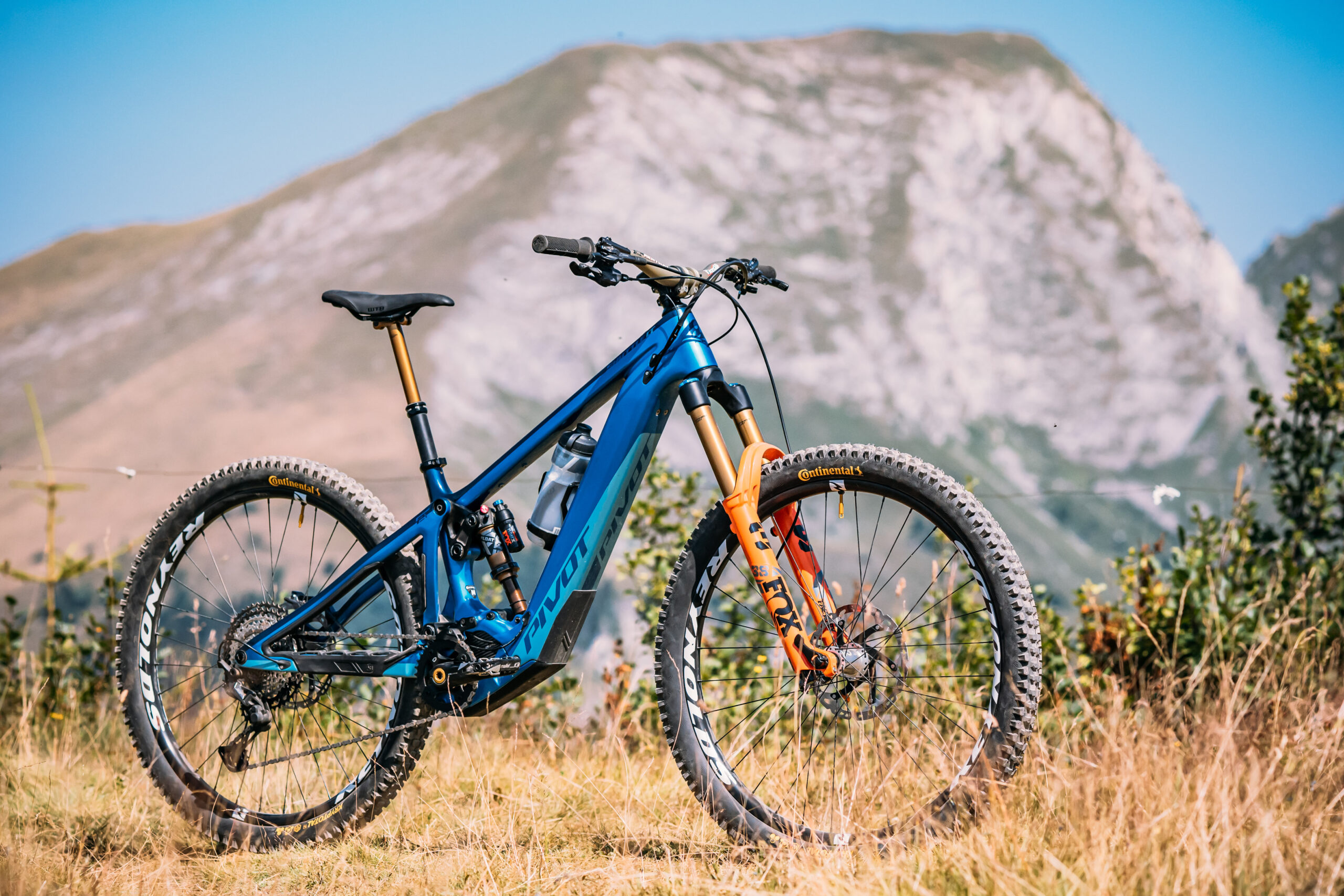
The e-mountain bike realm is expanding.
At Sports Garage we’ve been following the categorization of these bikes with curiosity and enthusiasm. The question for an e-mtb is no longer: E-bike or no e-bike But rather: Which e-mountain bike is right for me?
With recent new releases from our favorite manufacturers and more on the way, riders can now explore different e-mtb riding styles. Most manufacturers began with one e-mtb in their line-up. As new models have been introduced, e-mountain bikes are differentiated in similar ways to analog bikes—different geometries and travel lengths, most notably. However, e-mtb categorization also means new drive unit (motor) specifications as well.
In this comprehensive guide, we break down the most exciting products currently available in the following manner: lightweight versus long travel, torque, and battery capacity. You’ll find that depending on your riding style and desired ride experience, there might be a specific bike best suited for you.
First Things First: Reading the e-MTB Spec Sheet
While Boulder riders, new and experienced, have developed various levels of comfort with quantifying terms like “standover height” or “travel,” e-mountain bikes introduce new terms and new measurements to the description of the bike’s technician details, or its “spec sheet.” There are two main terms you need to know: Newton Meters and Watt Hours.
Newton Meters (indicated by Nm) is the measurement of the ability of the motor to rotate the back wheel of an e-bike. In other words, it’s torque. The more torque, the more power you have while accelerating—particularly at slower speeds up steep hills or over obstacles.
Watt Hours (indicated by Wh) is the measurement of the total available power for an e-mtb. You’ll see this listed as “battery capacity” in our guide and on most manufacturers’ websites.
What Style of e-MTB Is Right for You?
Ultimately, the e-mountain bike that’s right for you complements your riding style, terrain preferences…and maybe that of your friends! Take Boulder and the Front Range for example. Do you want maximum power to get in extra laps on Hard Money? Or do you want to cruise along the Switzerland Trail after work? (Check our guide to e-mountain bike trails in Boulder and Jefferson Counties.)
Lightweight vs. Long Travel
The primary differentiator in the new e-mountain bike riding experience is the categorization of the bikes. Lightweight bikes blur the lines between analog bikes and those with a battery on board. The frames tend to weigh less and are most likely to be described as having better power to weight ratios. Just look at the Pivot Cycles SL, which stands for “Super Light.” This agile bike features a FAZUA Ride 60 drive unit, achieving one of the lightest e-mtb experiences possible. In contrast, the Pivot Cycles LT, which stands for “Long Travel,” serves up more power, battery life, and travel, but weighs closer to 50 pounds.
To help narrow things down, we asked Dan to compare the Pivot SL to the LT after riding both during an e-mountain bike dealer education event in Salida.
“To me, it’s all about the experience you are after. If you love the traditional mountain bike feel, then the lightweight e-mtb is the best choice for you. The handling is similar to what you would expect from an acoustic bike with enough assist to help you extend your range or take the strain out of the climbs. The full-power e-mtbs are a different animal altogether. They often weigh over 50 pounds and the handling is very different. They are very stable and hug the ground with ferocity. The power is unbelievable and will have you riding up and over things that previously seemed impossible. They also open up new terrain and make rides that would previously only be possible for pro riders accessible to the average mountain biker. It’s a new type of experience that might appeal to those looking for the next frontier of pedal-powered riding.”
Why do we mention your friends? In our time working with Boulder e-mtb customers and clients, we’ve heard stories about being “out-powered” in an e-bike group ride. While we haven’t experienced this personally, we follow the logic: If you have a more powerful motor and more battery life, you may have the tools on board to ride harder or further than riders on a lightweight e-mtb. Conversely, if you’re the only person with a full-power bike in a group of riders on nimble “SL” style e-bikes, you might have a power-to-weight ratio disadvantage. We look forward to learning more about this dynamic as more diverse e-mountain bikes show up to group rides.
How Much Power?
When it comes to brute force, look no further than the lineup from Rocky Mountain Bicycles. The highest power setting on their proprietary Dyname™ 4.0 motor delivers a jaw-dropping max boost of 350 percent—that’s 108 Nm! (It is aptly named “Ludicrous” Mode.) All three of Rocky Mountain’s e-mtb rigs, from the Growler Powerplay hardtail to the long-travel Altitude Powerplay, sport this beefed up system. Keep in mind that bigger battery power typically translates to a heavier bike.
Demo an e-MTB in Boulder
Choosing the right e-mountain bike means the difference between a good ride experience and a great one, and there’s no better way to hone in on your preferences than with a demo. While an e-mountain bike demo continues to be hard to come by as supply chains normalize, our fleet will be ready to test ride again by spring 2023. If there is a particular bike you’d like to try, we’d love to know. Drop us a line at sales@sportsgarage.net.
THE e-MTB BREAKDOWN
Meet the e-mountain bikes for sale, or presently available from our partners. To learn more about each model, visit our e-mountain bike catalog.
